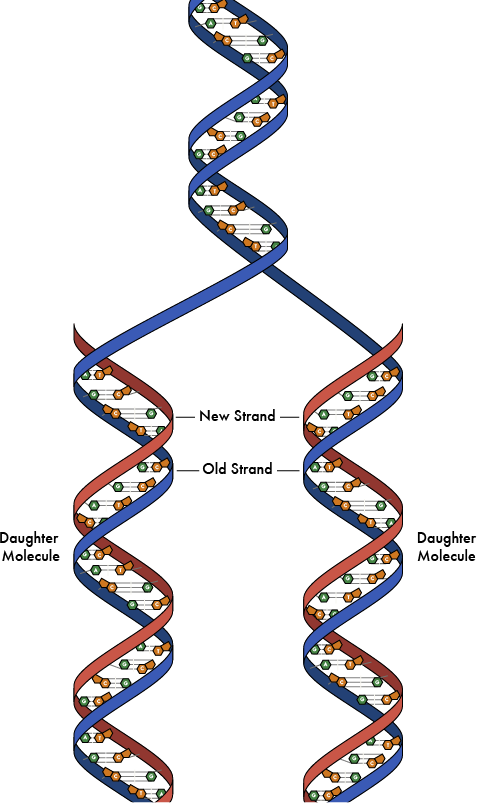DNA (deoxyribonucleic acid) is the building block of our genes and chromosomes. DNA is found in every cell within the body and it carries the recipe for building all proteins that cells use to function properly. DNA is made up of molecules, called nucleotides that form the structure of DNA. Each nucleic acid is composed of a nitrogenous base, a five-carbon sugar, and a phosphate group (Figure 6). There are four nitrogenous bases present in DNA – adenine and guanine (purines) and cytosine and thymine (pyrimidines). There are over 3 billion of these nucleotides in each cell, and they are tightly wound and packaged to form 23 pairs of chromosomes that reside in each cell’s nucleus. The DNA nucleotides are arranged in a very specific order that contain the “recipe” for each protein to be made.

Think of nucleotides like letters in the alphabet. When letters are arranged in a certain way they form words that make sense to a reader. This is the same concept for DNA. The nucleotides are arranged in an order that makes sense to the cell. The “words”, which are composed of strings of DNA nucleotides, are called genes. Each gene instructs the synthesis of a particular protein in the cell, with a specific function. So if the order of the nucleotides is changed, then the function of the gene could change, leading to a problem with the resulting protein.
Every cell’s DNA in a person is identical, although the pattern of genes that are normally “on” or “off” in a cell determines what the ultimate function of that cell will be. And surprisingly, each person’s DNA is 99.9% identical to every other human in this world, regardless of their nationality or ethnicity. This 0.1% sequence difference in each person is what makes each person unique.
Many cells in the body are constantly dividing and replicating (or reproducing an exact copy). Each time a cell replicates the DNA replicates as well (Figure 7). Replication of DNA is a critical process of cell replication. Because DNA carries the recipe for making all protein components of the cell, damage to the cell’s DNA could change the entire function of the cell and may also cause problems in cell replica-tion. For example, a cell containing damaged DNA could be replicated indefinitely, producing new copies with damaged DNA.
